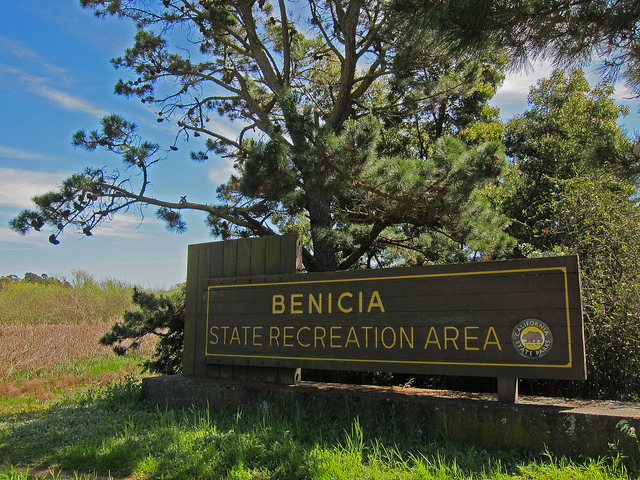While park advocates around the state expressed shock and anger over the discovery of a secret stash of $54 million in the state parks department, the city of Benicia kept its cool.
“I was surprised there was that large a surplus,” said Mario Giuliani, Benicia’s manager of economic development. “But that’s not enough money to keep the parks operational.”
More precisely, $54 million would have been enough to give each of the state’s 279 parks a windfall of $200,000—which is more than pocket change. A year from now, though, with ongoing budget shortfalls at every park and $1.3 billion in deferred maintenance, California’s parks would still be starving.
While some cities are demanding that the State Parks Department give back the funds they donated, Benicia is taking a cool-headed view and still plans to hand over $15,500 for 11 months of water, trash pickup, and a couple of toilets at Benicia State Recreation Area (SRA). It also pledges to make good on its recent offer to raise additional funds for the park.
There’s a hitch though. Post-scandal, fundraising will likely be more difficult. “Many folks already have a low opinion of state government,” says Bob Berman, vice president of the Benicia State Parks Association. “This scandal only reinforces that opinion.”
A tumultuous year for the SRA began in May 2011, when both the SRA and Benicia Capitol State Historic Park turned up on a list of 70 California parks scheduled to close in July 2012.
The Benicia State Parks Association spearheaded an effort to keep the capitol open. Through media, grant applications, membership drives, and a flurry of events, the tiny non-profit raised $88,000—and expects to win state approval to operate the historic park soon.
Meanwhile, the city took the lead on avoiding closure at the SRA. At first, the city contemplated taking over operations, but had irreconcilable differences with the state. The two entities argued over who would pay the costs of the takeover, but mostly over liability, says Giuliani. In the end, the city decided to give the state some money it will save from staff vacancies over the next 11 months—and leave the state in charge.
Throughout the year, the definition of “closure” kept changing. This spring, the state announced that people wouldn’t be allowed to enter the SRA when the park closed. In the current plan, however, closed means open, just a crack.
Pedestrians, bicycles, and wheelchairs will be allowed to bypass a gate that will be locked to cars at some unspecified time in the future, says state park district superintendent Danita Rodriguez.
Before news of the $54 million hit, park staff and Giuliani had compiled a list of tasks to tackle if money was forthcoming: prune trees, clear trails, keep the weeds down, keep the gate open. Now there’s a new name at the top of Giuliani’s list of potential funders: the no-longer-destitute state parks department.
Joan Hamilton is the author of “Parks and the People: Keeping California’s State Parks Alive in Hard Times,” a special supplement to Bay Nature magazine’s April 2012 issue.





